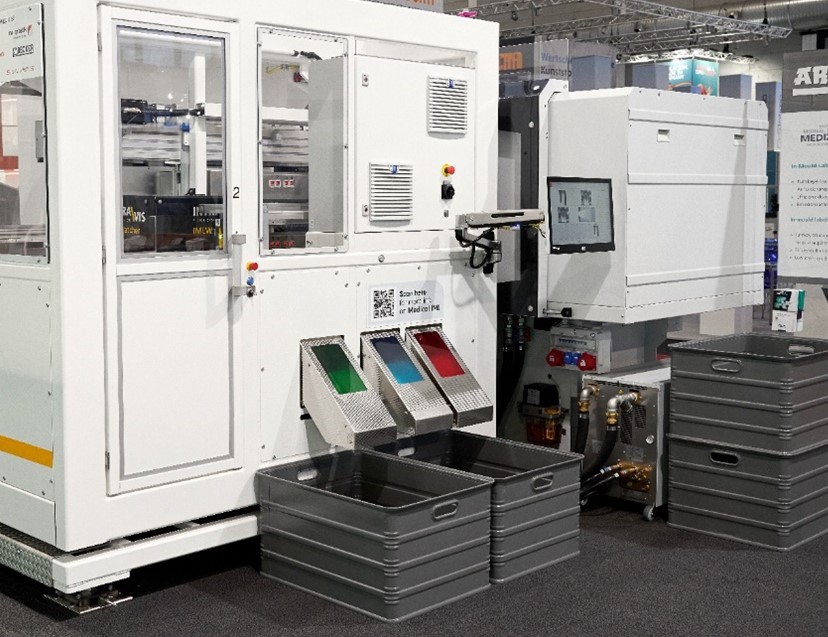
June 25, 2025
Innovation at the Surface: How In-Mold Labeling is Transforming Medical Device Manufacturing
In the highly regulated world of medical device manufacturing, precision, compliance, and durability are essential. To meet these demands, manufacturers are increasingly adopting in-mold labeling (IML)—a process that integrates labels directly into plastic components during molding. Once limited to consumer packaging, IML has evolved into a transformative solution for the medical sector, offering more than just aesthetics. It provides a durable, tamper-proof, and sterilization-resistant labeling method ideal for high-performance medical devices.
What Is IML in Medical Applications?
In-mold labeling involves placing a pre-printed label into a mold cavity before plastic is injected or blown around it. The result is a fully integrated, single-piece component where the label is a permanent part of the product. This eliminates the need for post-molding labeling and ensures critical information—like lot numbers or usage instructions—remains intact throughout the device’s lifecycle.
Core Benefits of IML for Medical Devices:
- Sterilization Resistance: Withstands autoclave and gamma sterilization without degradation.
- Tamper-Proof Labeling: Labels cannot be removed or altered after molding.
- Enhanced Durability: Long-lasting, high-fidelity printing resists wear.
- Permanent Identification: Ensures traceability with UDI (Unique Device Identification) compliance.
Innovations Advancing IML in Healthcare:
- Advanced Materials: Medical-grade films and inks are engineered to meet FDA and ISO biocompatibility and sterilization standards. Multi-layer constructions resist fading and degradation, even under harsh sterilization processes.
- Precision Automation: Today’s high-speed robotic systems place labels with micron-level accuracy. Integrated vision systems verify placement and quality in real time, reducing errors and increasing throughput.
- Cleanroom Compatibility: New IML systems are designed for Class 7 and 8 cleanrooms, featuring oil-free robotics, static-reducing technology, and low-particulate materials. This enables seamless integration into cleanroom molding operations.
- Smart Labels and Embedded Technology: IML is evolving to include smart features like embedded QR codes, RFID tags, and NFC chips, enabling real-time tracking, data logging, and post-market surveillance. Some innovations go further with status-indicating labels that alert users if a product has been exposed to harmful conditions (e.g., temperature, humidity), which is especially critical for diagnostics, biologics, and implants.
- Digital Printing for Customization: Short-run digital printing allows manufacturers to create patient-specific or variable-data labels that are permanently embedded during molding. This is ideal for personalized medical devices like inhalers and diagnostic kits.

Completely Integrated Production Process
Why It Matters
In the medical field, labeling is not just informative—it’s a regulatory mandate. Inaccurate or damaged labels can lead to product recalls or compromise patient safety. IML enhances compliance, reduces labeling errors, and ensures long-term legibility. Additionally, by eliminating secondary labeling operations, it improves production efficiency, reduces contamination risk, and shortens time-to-market.
Looking Ahead
As healthcare devices become more connected and customized, IML is positioned to become a foundational part of next-generation manufacturing. With capabilities that enhance traceability, regulatory compliance, and user safety, IML is helping manufacturers deliver smarter, safer, and more reliable medical products.
Conclusion
In-mold labeling is no longer just an aesthetic feature—it’s a critical innovation for modern medical manufacturing. As technology evolves, IML will continue to push boundaries, offering manufacturers a competitive edge in both quality and compliance.
